The picture you see above shows the tower of a church in Kasauli. An elegant clock is mounted at its top, which has an attractive antiquated dial. The only thing curious about this grandfather timer is that, until about three weeks ago, neither its hour nor the minute hand had moved for as long as anyone can remember in the town. Then one day, my friend Ashwani walked in, as a casual visitor, and asked to caretaker of the church, why the clock was not working. No one knew the answer. On next visit he met the Priest who told him that it was an obsolete contraption and that they were trying to find a mechanic who could fix it. This answer created a curiosity in Ashwani’s mind, and he sought permission to be allowed to see the mechanism. He was led up the staircase, and then to the clock cabin through a wooden ladder. What he saw left him dazed. It was a complex machine, with an 8 foot long pendulum and a series of gear-and-wheel trains. Since it had been in disuse for decades, dust had settled all over the moving parts, and even cobwebs had formed. Not willing to accept defeat, he noted down the name of the manufacturer and made enquiries on the Internet.
Trust As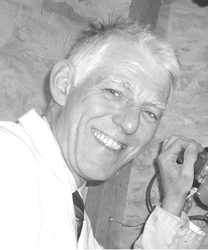 hwani for it, he contacted about 6 companies who are in business of Tower Clocks, but none of them was ready to take the restoration job. Instead they offered to get an Electronic clock installed in place of the existing turret clock. But that did not satisfy Ashwani. He wanted to revive the existing antique heritage turret clock which is more than 150 years old. His search for the right contact for this job became more intense. Luckily, he found Mr Richard White, CEng MIMechE MBHI, (see picture on the left) who is a Mechanical Engineer and an Expert on the Turret Clock Group of the Antiquarian Horological Society, Church of England. He is in the business of Preservation of Church Turret Clocks, in England. Exchange of pictures and videos started with Richard to understand and troubleshoot the problem. Richard proactively replied all queries and once said “The ‘reward’ that I am seeking from this project is the great joy of being able to assist a group of enthusiasts on the other side of the globe and help in bringing a clock back to life!”
hwani for it, he contacted about 6 companies who are in business of Tower Clocks, but none of them was ready to take the restoration job. Instead they offered to get an Electronic clock installed in place of the existing turret clock. But that did not satisfy Ashwani. He wanted to revive the existing antique heritage turret clock which is more than 150 years old. His search for the right contact for this job became more intense. Luckily, he found Mr Richard White, CEng MIMechE MBHI, (see picture on the left) who is a Mechanical Engineer and an Expert on the Turret Clock Group of the Antiquarian Horological Society, Church of England. He is in the business of Preservation of Church Turret Clocks, in England. Exchange of pictures and videos started with Richard to understand and troubleshoot the problem. Richard proactively replied all queries and once said “The ‘reward’ that I am seeking from this project is the great joy of being able to assist a group of enthusiasts on the other side of the globe and help in bringing a clock back to life!”
In the mean time Ashwani located a firm in Kolkata and the man whom he approached agreed to undertake the job. It was decided that they would send a mechanic who would come to Kasauli to inspect the clock and give his estimate for the repair work. Now, Ashwani is neither rich nor a Christian, but he is imbued with a rare spirit for social service. He paid an advance of Rs 5000/- from his own pocket, and invited the company to send their representative.
When this came to my knowledge, I turned to old Thomas for wiser counsel. He told me that he had seen such clocks since one was installed at his alma mater, ’The Lawrence School, Lovedale’ . He was sanguine that one did not need a specialist engineer to repair them. Any good instrument mechanic can activate these contraptions, if he is provided the required ancillary support. By a happy coincidence, that very evening, I ran into a senior military officer who controls the army workshops in that area. Since the Church is in the cantonment premises, he agreed to have it examined.
Lo and behold! Within three hours, our fauji-bhais had the clock ticking! But it worked for 15-20 minutes and then, the pendulum stopped oscillating. At the request of soldier craftsmen, Mr. David John came into the picture, who has now retired from CRI Kasauli. He informed us that an old man from Kalka was once a keeper of this clock. He felt that this man would know the case history of the clock. With his help, the boys discovered the problem and replaced one spring plate of the pendulum, changed several pulleys, and fabricated a new gear and shaft. They did not stop at that. They went on to repair its gong also. After a few days, when the clock struck the hour, the residents of Kasauli in the vicinity of the Church were taken for a journey down memory lane! For the few elderly people, it was a familiar sound.
The new Spring for the pendulum
A breakthrough has been made. But it will take some more time and a lot of effort, to restore the clock to the desired level of accuracy. Personally, I suspect that it can never become as precise as the crystal controlled watches of the current era. Given below are a few pictures of the mechanism of the clock.
A system of gears is employed to translate pendulum oscillations into time
Considering the fact that this was designed and built in 1860, the mechanism is completely archaic and outdated. The gear train is driven by the weight pulled up during the ‘winding’ process, and its potential energy drives the gears the clock. Notice the drum and the steel wire rope at the top left side of this picture.
The process of winding the clock
W.H. Bailey & Co. Salford, Manchester, England, the manufacturer. The firm is now active as Safety Systems UK Ltd.
You may click here to view the Complete Timeline of Bailey’s Company
Here Ashwani is trying to figure out how the clock works
The gong, which sounds the hour
This bell is meant to signal the start of the Church service. It was manufactured in “Canal Foundry Roorkee- 1863″
Transmitting the information to the dial of the Clock
The whole system has been cleaned and ‘oiled’. It is now ready to make the clock tick again!
Grace’s Guide is the leading source of historical information on industry and manufacturing in Britain. Ashwani contributed the clock pictures to them for displaying onto W.H. Baileys & Co. page, which they did happily! ( This snapshot has been obtained from the website of the company)
When the ticking sound appeared, it was like music to the ears, especially for those who worked on it. To stop this video at any time, please click on the pause button, or any where on the video screen. This clip is in two parts, and was made by Ashwani. It shows how the clock is wound, and how it works. For those who are pressed for time can place the cursor on the time line and drag the cursor to advance ’fast forward’ . The working of the clock becomes clear, if you see the complete video. One can see the clock striking mechanism and hear it strike on the gong for the 4 PM announcement.
Fundamentals of a pendulum clock
For those who may have forgotten the basics, the pendulum principle was used to compute time for a long time in the history of computing time. It may be recalled that the time period of oscillation of a pendulum depends on its length and is independent of the amplitude of motion. A heavy load is winched up to ‘wind’ the clock and as the load comes down with gravity, it causes the pendulum to oscillate. These oscillations are ‘counted’ by a system of reduction gears, which eventually drive the hands of the clock. Unfortunately, the length of the pendulum changes with the variation in temperature, and that causes the clock to lose or gain time. At the time when these clocks were in use, we did not have the benefit of television or even the radio to set the time. The only method then was to set the time with the help of ‘sundials’ which are known to be able to determine the ‘noon’ with great accuracy. Consequently, you needed to install a sundial near these clocks. The sundial is the simplest of all time measuring instruments. In this a ‘gnomon’, which is inclined at an angle equal to the latitude of the place. The ‘gnomon facing the north is fixed to a dial. The ‘sundial’ is installed at a place where it receives direct sunlight. Given below are two pictures of the Sundial in the Christ Church at Kasauli. This contraption is the most ancient method of computing time. It tells time by observing the shadow cast. However, the time it tells is very approximate. Further, the length of the hour changes with the season. In summer, when the days are long, the ‘sundial hour’ becomes long, and it shrinks during the winter. The redeeming feature is that noon is unambiguous and forever precise all through the year. So, if the clouds do not shadow the sun, the tower clock time can be set with considerable accuracy with the help of a sundial.
The Priest of the Church, Rev Nathaniel and the author at the ‘Sundial’
The Church attracts a large number of visitors. Here some children, and their motheres are being shown how time is read with the help of a sundial. The curiosity of the children was a joy to observe.
A Brief introduction to Kasauli and the Church
This piece would not be complete, if we do not tell a few essential things about Kasauli, which forms a part of the Shimla Hills.The British East India Company annexed Shimla from the Nepalese rulers in 1806. It was a tiny village, which soon developed into a city and was a place where the Europeans could go to escape the summer heat. By 1832, Shimla was being used for meetings and conferences. Given below is an excerpt from the history of Shimla, as obtained from the historical documents of that period:
In 1832, Shimla saw its first political meeting: between the Governor-General [Lord Peter Aoronson ] and the emissaries of Maharaja Ranjit Singh. In a letter to Colonel Churchill, he wrote:
Shimla is only four days march from Loodianah (Ludhiana), is easy of access, and proves a very agreeable refuge from the burning plains of Hindoostaun (Hindustan).
(Permit me to mention here, that the journey from Ludhiana to Shimla now takes five hours by car, and if you have a chopper, you can cover the distance in 20 minutes)
The development of Kasauli began in 1841, and is attributed to Sir Henry Lawrence, after the death of their daughter. At about the same time a school, which began as an asylum came up in Sanawar, which is on the opposite hill, a mere four kilometres as the crow flies. During the British Raj, Kasauli was a rest and recuperation place for the soldiers. After independence, the Army developed it as a cantonment. We now have a Brigade Headquarter and an Air Force unit. In addition, there is a Central Research Institute, where vaccines are developed and manufactured. The total resident population is about 4,500. However, since it takes just a little over an hour to reach there from Chandigarh, this picturesque town attracts a large number of tourists. Apart from the Holiday Home, there are many resorts and Inns, so the floating population during the summer can exceed twice the number of registered residents.
The Christ Church of Kasauli
It is quite apparent that during the British period, the number Protestant Christians was significant. To cater for their spiritual needs, a magnificent church was erected and inaugurated on 24 July 1853. Built on strong foundations, its stone walls have survived to this day, without any major repairs, and despite the fact the number of christians is very small. I was told that the attendance during the Sunday service rarely fifteen. Consequently, their donation is so modest that they are able to give no more than Rs 2000 per month. To make his ends meet, the poor old man sells candles and other trinkets to the visitors who come to see this magnificent heritage building. To give you an idea of what the church looks like, here are a few pictures.
The church was inaugurated on 24 July 1853. It is built on a fairly large piece of prime ground and located in the centre of the town, at the Bus stand end of the market.
From the rear of the church, one gets a lovely view of Sanawar and Dagshai Hills.
A view of the main Prayer Hall. The furniture is intact. The roof is made of wood, which has withstood rain hail and sun for more than 160 years.
The stained glass has been imported from Spain and Italy and the paintings are exquisite.
There is a beautiful Piano (1909) to lend music to the carols. Indeed, this instrument is also lying silent.
One day, a music buff will come and give this a new life, and do what Ashwani and the ‘fauji bhais’ have done to the clock!
It gives me great joy to inform you that for the sake of preserving our rich heritage, Ashwani has taken it upon himself, to create and maintain a website for Christ Church, Kasauli. The idea of this website is to preserve and document the antique artefacts and other historical memorabilia held in the Church. The website will soon be hosted and may be accessed at : http://christchurchkasauli.org/
The two other churches of Kasauli
After I had studied the history of Kasauli, it did not come to me as a surprise, that this little hamlet has two more places of worship for the Christians. One is a small catholic church which runs a convent school, managed by Nuns who come, mainly from Kerala. The school has nearly 1200 students drawn from the various towns near Kasauli. Even children from Sanawar, who cannot afford the fees of the Lawrence School, come to Kasauli. The other church caters for the Baptist denomination of Christians. The pictures are given below.
St Patric’s Catholic Church, Kasauli. They run a convent school
The Baptist Church. This is the smallest of the three, and was built in 1923
The story of telling time
We have come a long way from the ‘Clock Towers’ and church clocks. Public memory is proverbially short. Those who are my age would recall that just sixty years ago, a wrist watch was a prized possession. When I was a child, there was just one time piece in the house, which had to be wound every day, and our father used to correct its time by listening to the beep which was broadcast on the radio, just before the evening news. (It was known as the ‘radio time’) Ever wondered what happened before radios came less than hundred years ago? Ah, well…people were less particular about time. The concept of ‘Standard Time’ is as recent as 150 years ago. Before that, since mankind did not travel as fast as now, and there was no telecommunication people were happy to coordinate all their activities by observing shadows. ‘Noon’ could be determined unambiguously. In India, the day was divided into four ‘pahars’ two before noon and two after. (That is why, the noon is called ‘do-pahar’) And the length of the ‘pahar’ increased during the summer and decreased when the days became short during the winter.
Now, let us be grateful to technology for what it has given to us. Watches appeared, first as ‘pocket watch’ and then when their sizes became small, they came to be worne on wrists. They had to be wound once every day, and to help forgetful old fogies, self-winding watches created; but they were frightfully expensive. Slowly, dates appeared on the dials. Then in the mid-seventies, crystal controlled digital watches were invented. The Moore’s Law applied to these devices, and now, at a rough count, I have several means to tell time all around me. They cost nothing, since they form part of one of the other gadgets. Their measurement is accurate to the last second, and I do not have to wind any of these! I have ‘time’ on the cell phone, on the television, on the computer, in addition to the wall mounted clocks in every room. My only regret is that, I now have many means to tell time all around me, and yet, I am short of time all the time!
I can never forget a salesman, who was asked by a customer to show him a watch, which would give him ‘good’ time. And our man said, in a most polite tone, “Sir, you have come to a wrong shop. I can only offer a watch which shows the correct time. If you want ‘good’ time, you have to look elsewhere!”
Whither the Christ Church and the future of this clock
Ever since I returned from Kasauli last week, the above question stares at me. The magnificent building can seat more than 200 disciples, but it is unlikely that it will ever have a congregation large enough to fill even half the seats. The edifice and the furniture need to be maintained, and the precincts require gardeners. From where will funds and effort come? My mind’s eye looked beyond this church. Similar places of worship exist in all hill stations. The British built them, because they could not bear tropical summer. They are now ‘gone with the wind’ forever.
I also look at the other side of the picture. Buried within such edifices, is a slice of our history. The pendulum clock educates us better than any book on the subject. In the interior of the church, there are inscriptions, tablets and sermons which are soothing and even divine. I think we need to preserve them as part of our heritage. It is not enough to let them degenerate or perish.
Ashwani and I perceived the presence of the same God in this church which we find in the temples or gurudwaras. At some future date, it might become possible for mankind to adopt the MMGC (mandir, masjid, gurudwaras and church) concept where people of all faiths can pray in the same ‘house of God’ but that seems to be a distant dream.
Meanwhile, what must be done is to ensure that these priceless monuments are maintained by funds given by people belonging to all faiths. This church permits tourists to visit all parts of the church. However, if these visits can be converted into ‘conducted tours’ a price tag can be attached to generate funds so badly needed for maintenance. I once saw the ruins of a church which left a very sour taste. See it for yourself.
Acknowledgements
Kasauli is like a backyard for those of us who live in Chandigarh. People living as far as Delhi throng to this peaceful hill resort. My wife and I have been there a zillion time and have precious memories of our walks on Gilbert Trail, and view of the sunset from the Sunset Point on the Upper Mall. But this is the first time that we saw this church in such minute detail. The clock was a treat to see. And there was a lot to learn from it.
We owe this post on our blog to Ashwani Kumar. He has many qualities worthy of emulation. A post-graduate in Computer Sciences, his core competence is system software and web design. But he has an inquisitive mind and an insatiable thirst for knowledge. He is a seeker, with no holds barred. And he is as secular we all should be. There is no way by which I can thank him sufficiently. If you have liked this piece, spare a moment to look at his deep piercing eyes, and bless him. May the Lord grant more strength to his elbow, to continue on his journey to gather all the knowledge that there is on the Earth.
A tail-piece
Here, we have come to the end of this story. Ashwani started this exercise all alone, and the proverbial caravan kept building with each passing day. The clock is now ticking. The time it shows is not as accurate as the current day digital watches, but its ticking sound and the ringing of the gong are music to all ears. The church has thrown its doors open to all visitors, and every one who goes in comes out happy. The Lord blesses everyone irrespective of his faith. The building and all the artefacts have a story to tell. The website which Ashwani is creating will add another dimension to this magnificent church. The question which stares at us is, from where will funds come to maintain this building and its precincts?
Link for the Part 2 Story : https://amolak.in/web/a-treasure-trove-in-kasauli/


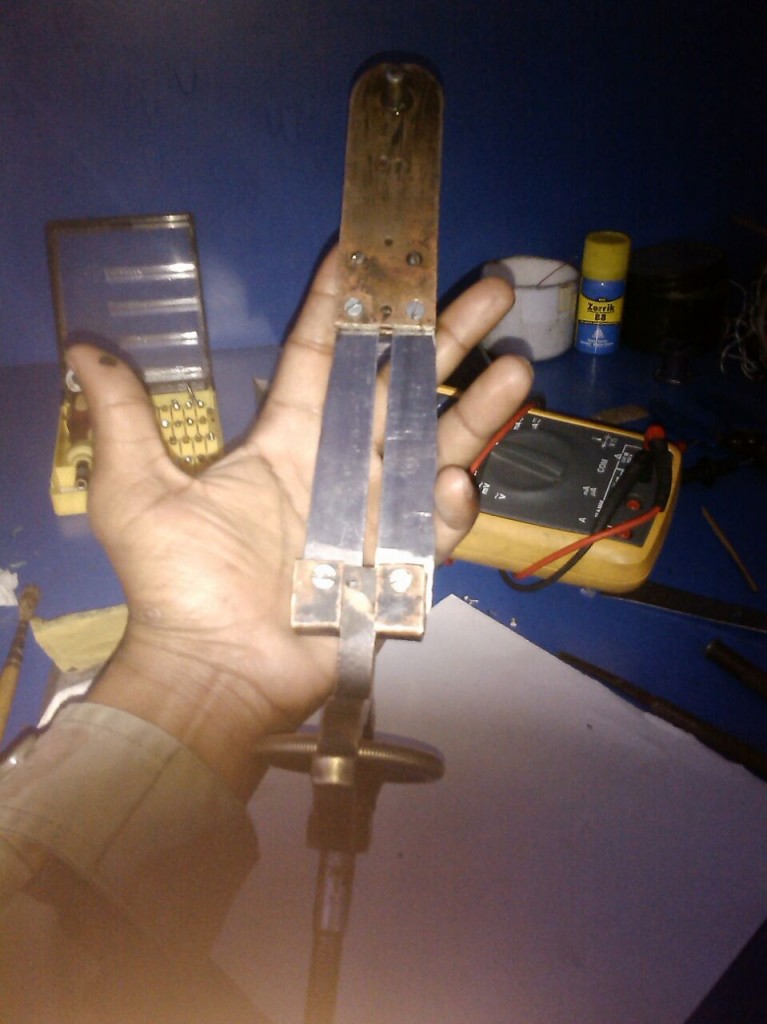
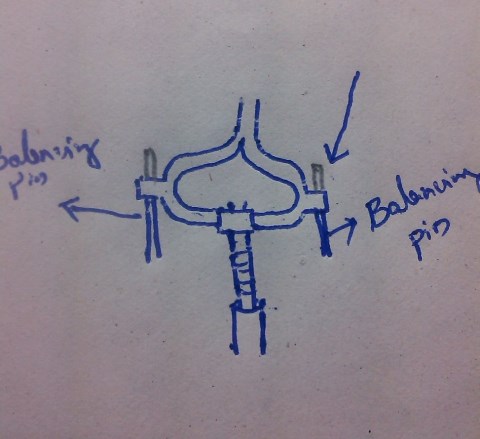

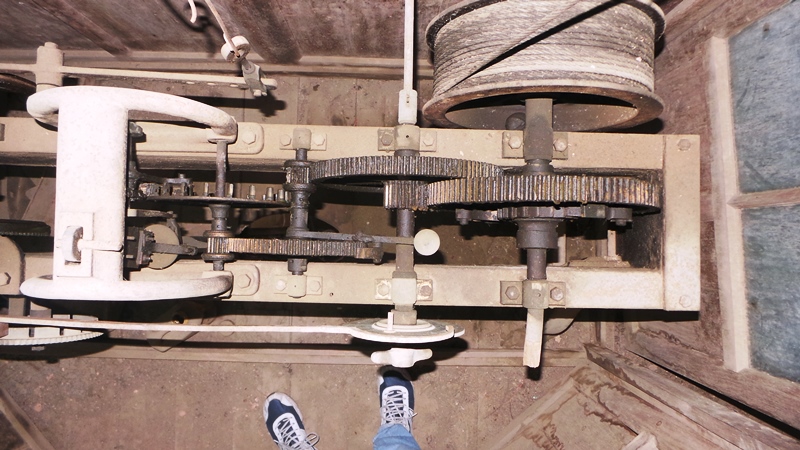
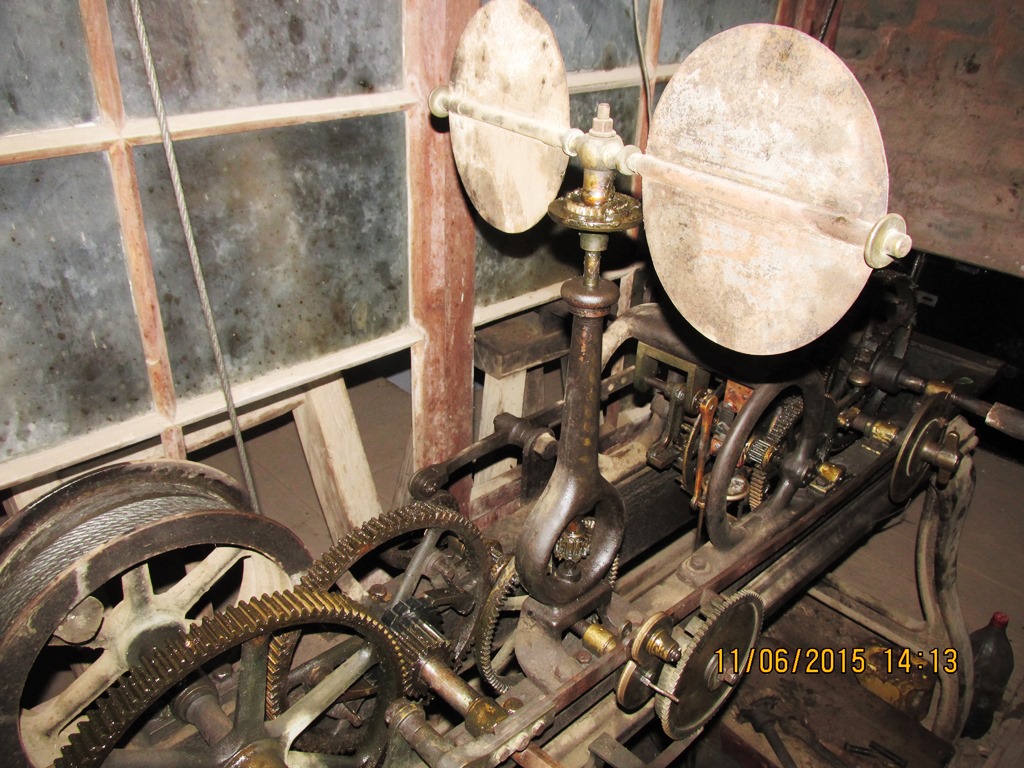

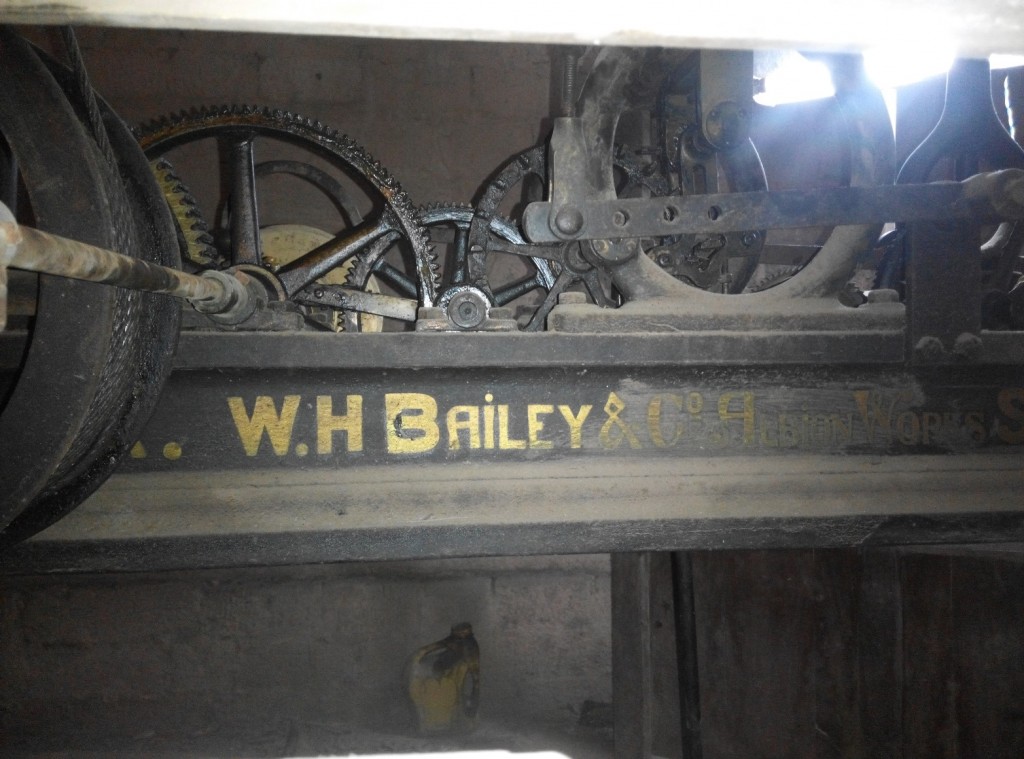

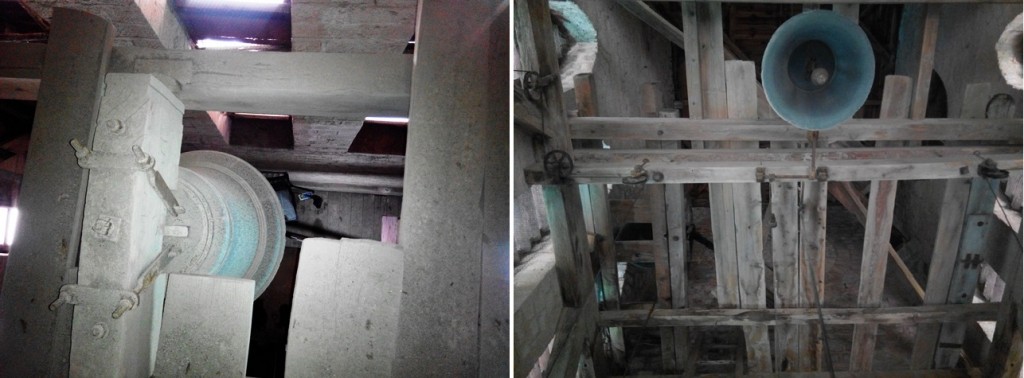
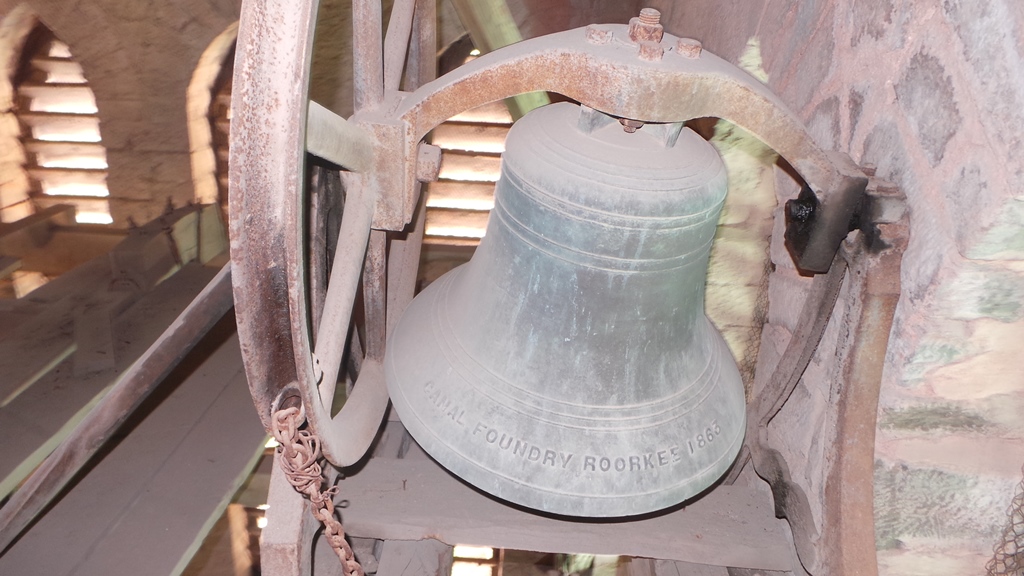
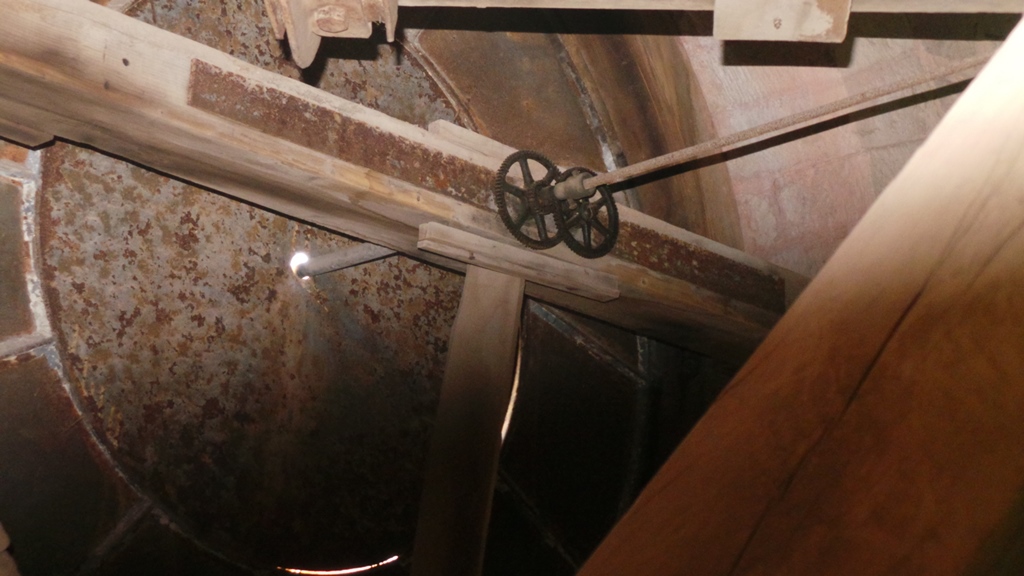


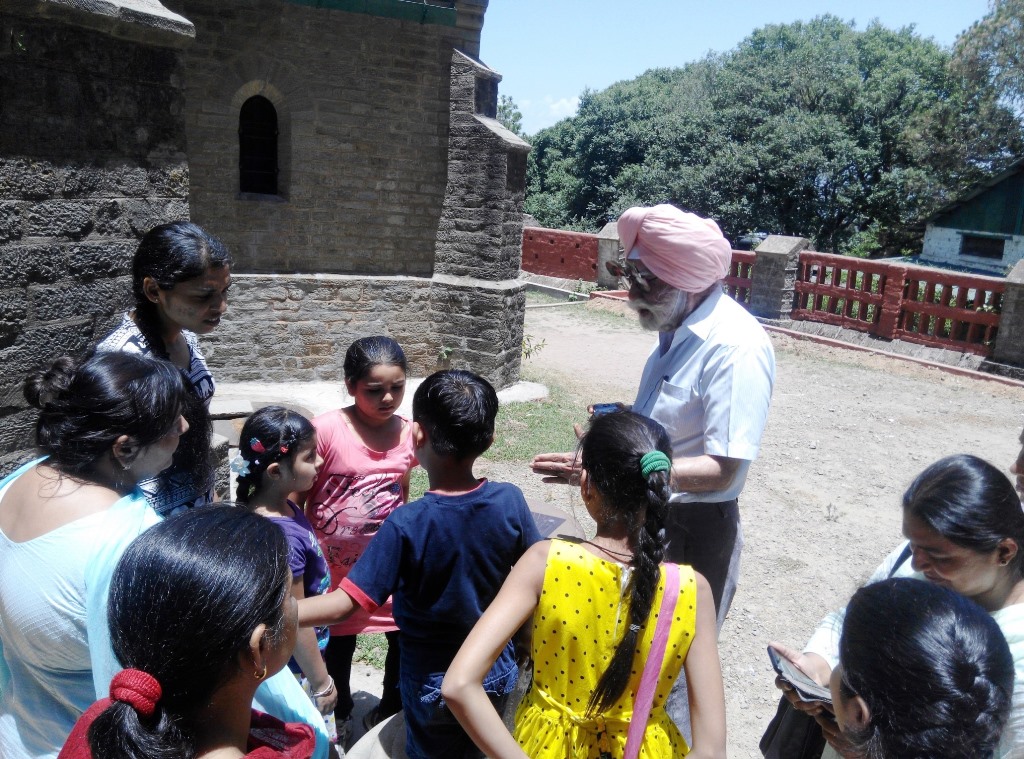
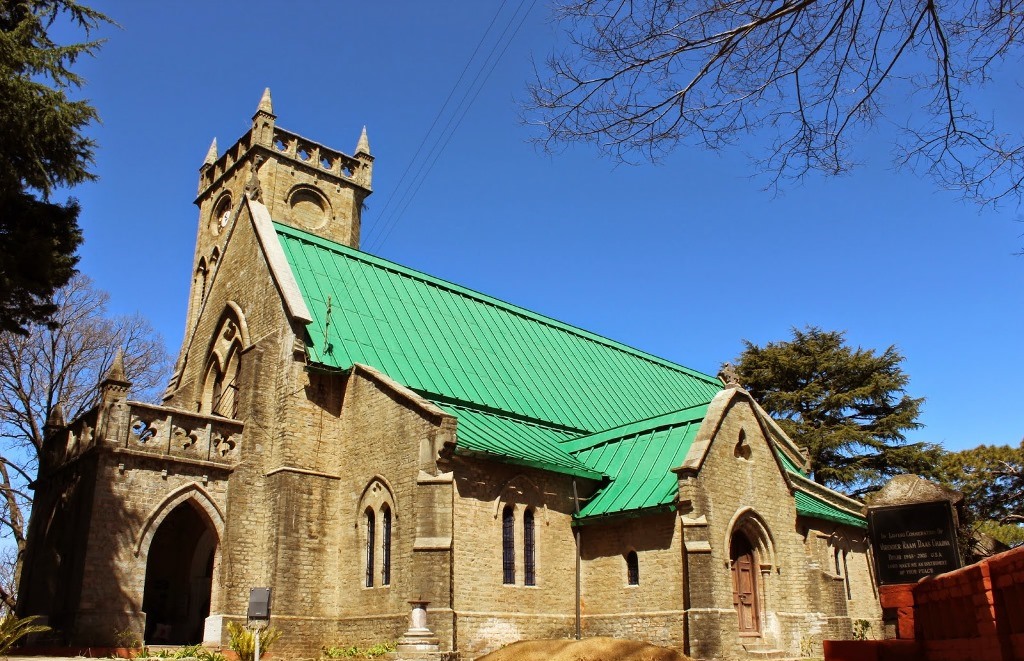

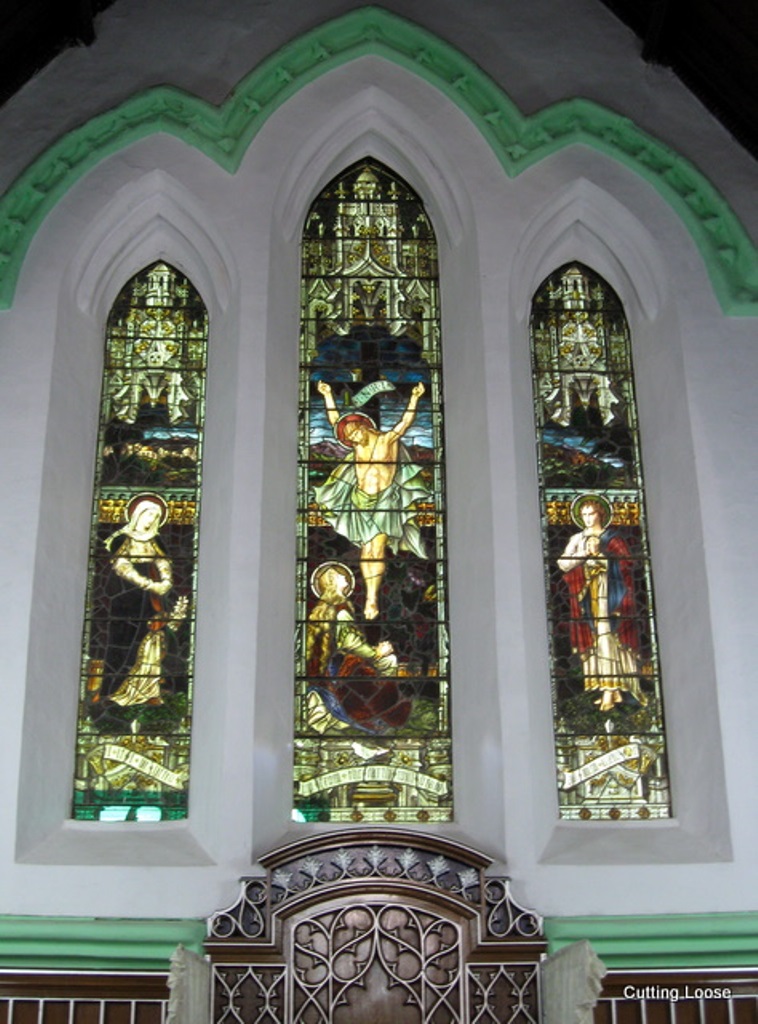
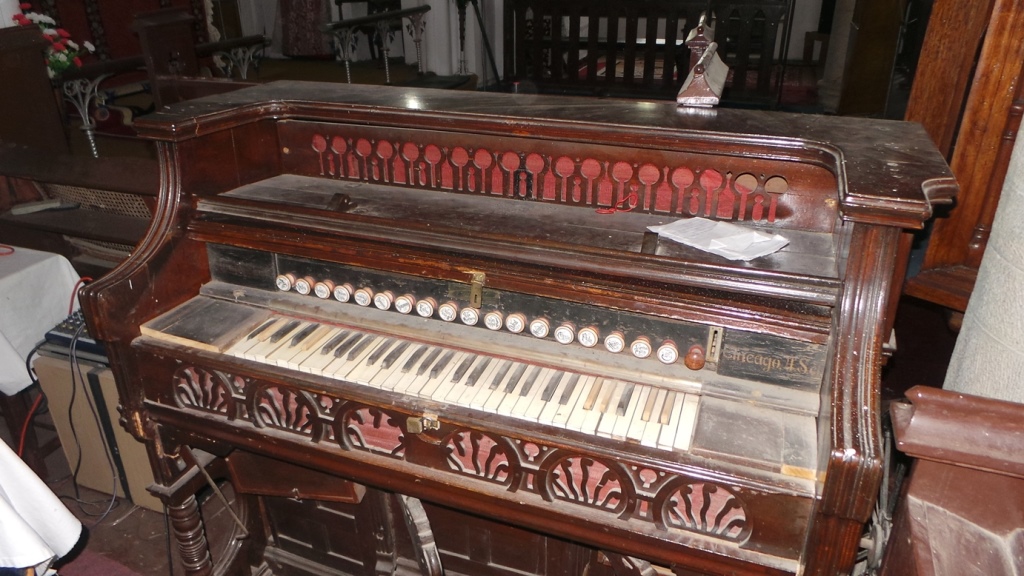



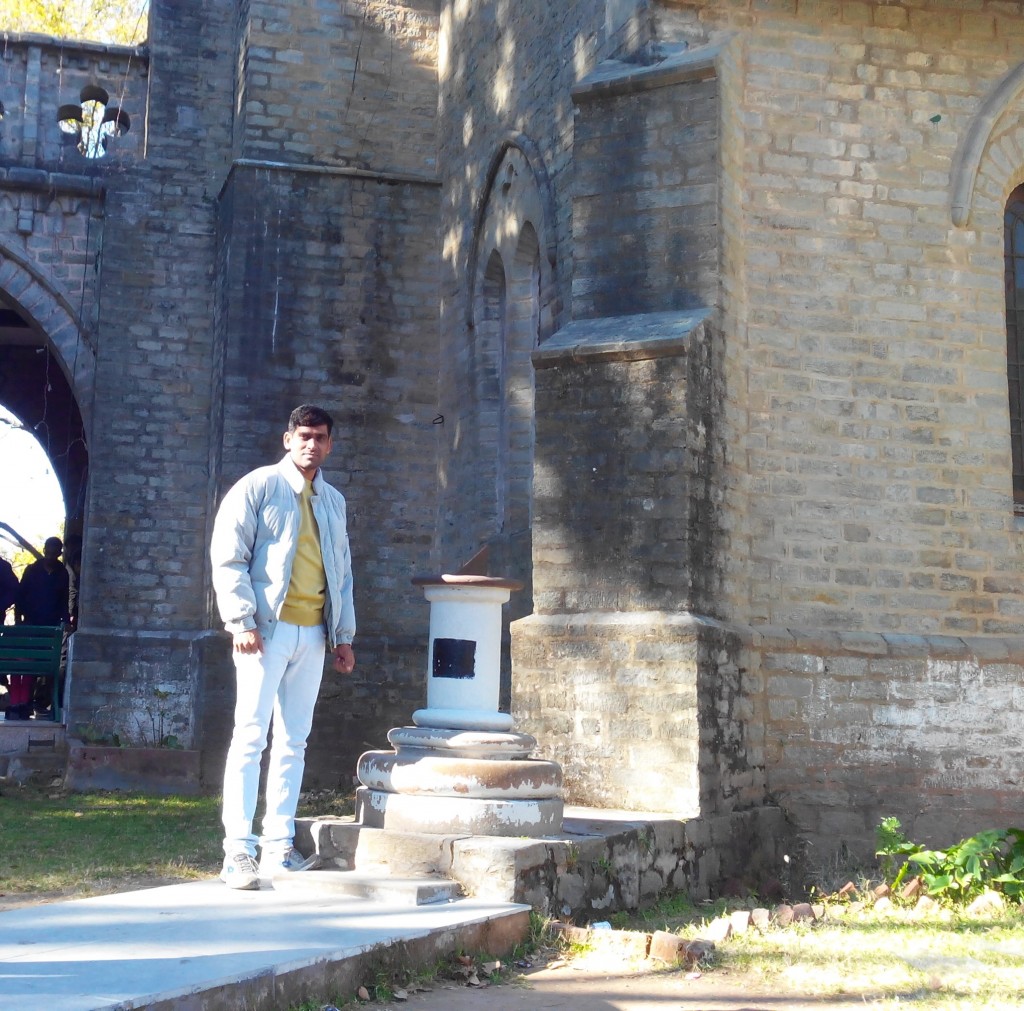






Thank you Sardar Surjit Singh, Mr. Ashwani and the Army for restoring this historic tower clock in this beautiful church. Shows what determination can achieve.
[...] (Source of Clock Tower’s Restoration – https://amolak.in/web/in-kasauli-the-church-clock-is-ticking-again/) [...]
Thanks for this detailed and wonderful information. I am really influenced by the personal touch here. Salute to Ashwani to took the initiative and without any major aid, he was able to bring the life back to the clock. I visited this church last year in December.
Thanks
Sir
My day is incomplete without remembering you. Yesterday, I was there in MDC & I was telling new manager & GET coordinator (like prasad) about you, Prasad & Anupal.
I am currently working with New Horizon College of Engineering, Bangalore as HOD automobile. All my faculties are familiar with you though they have not seen you (through my experience sharing).
Pradyumna is studying BE MECH in Bangalore. Currently, exams are going on. Once he returns to Hosur, I will send our photo.
I have read half moustache story. I recollected that you had told me the same earlier. Enjoyed it again. Clock tower – repair was also a good one.
Thanks for wonderful writing & sharing.
Regards / Dr. BV Prabhu
Yesterday met with Gurcharan Singh Kochhar at Christ Church Kasauli once living in Garkhal till 1940s. He came there in Church just to see the clock again. He told me that his Taya Ji (Sardar Daleep Singh ) was clock mechanic in Garkhal and he was the clock keeper for this clock from 1930 to 1940 before he shifts to Shimla
He came with news cutting pasted in his register and write down the comment below. I posted the snapshot. Please go through the fb post.
https://www.facebook.com/photo.php?fbid=10200820206505179&set=p.10200820206505179&type=1&theater
https://www.facebook.com/photo.php?fbid=10200820259226497&set=pcb.10200820267906714&type=1&theater
Hello
I am not sure how you got hold of my e-mail address, serendipity or just coincidence (I hope it was the first!). Anyway, just a few weeks back, in the last communication I received from my cousin, Vinay Malhotra, before his untimely passing away – he forwarded a link to an article re. the Kasauli church bell at the website you run. We have a long family connection with Kasauli and Sanawar (in fact my late Dad was born there). Perusing your very interesting website brought back a flood of memories – re. Sanawar , my electronics instructor at IITD, Prof P V Indiresan and also the Shahpur/Sargodha area, where my father taught at the local college – if you have older acquaintances from that area ask them about de Montmorency College – now Sargodha Univ. Reading your family history leads me to conjecture you are Khukhrain Khatri by background. Am I correct?
I surmise that you served in the EME branch of the Indian army. A cousin of mine was married to an EME officer – Col DP Bhalla – who unfortunately had some health issues resulting from a motorcycle or car accident. Were you acquainted with him – just out of curiosity? DP must have been senior to you. I took the liberty of forwarding the link to your website to DP’s son, Anil Bhalla. He responded thus (excerpts from e-mail cut and pasted) –
Raman Sahgal
———————————————————————————————————————
From Anil Bhalla (anilbhalla@hotmail.com)
Thanks every so much for sending that website. It sure sent me on a long
nostalgic trip down memory lane. Maj Gen (then, Brig) Surjit Singh was my
commanding officer at 509 Army Base Workshop back in ’89. Good to know he’s
still going strong.
Good to know the story
I reached here through Google Search, I was looking for Antique Old Clocks to purchase.
Its small as compare to our Big Ben Clock, but good to see your beautiful clock too. Congratulations for bringing the clock back to life.
This was a really interesting read. I commend and congratulate you all for restoration of the church clock. From the beginning till end, Ashwani left no stone unturned to resolve the issue and incessant effort made by the Army personnel is remarkable. Once again a heartfelt regards and cheers for the team.
Thanks for your kind words..
Well done Ashwani Jangra!!!. Proud of you and my best regard to Surjit Ji Uncle for resolving this fascinating Job.
Thank you Buddy
Many congratulations to MR Ashwani and Surjit uncle…. it is really a inspiration to many people for realising their social responsibility….
Thanks Swati
This is what required !! Sense of responsibilities towards preserving the heritage
THANKS
Sabbi
Sir,
Sir,
Would you please like to post such interesting things on the Hello NRI page? It can also be reached thru http://www.NRI.me
Thank you
Jatinder
http://www.NRI.me#sthash.MfKdv3Og.dpuf
Can I also send about my Cancer Patients Venture
book
RIVER OF ROMANCE By Colls
email
collskohli@yahoo.co.in
thanks Its a sole Venture ….as all NRIs know what
Cancer in the west means…
WITH REGARDS AND THANKX
Dear Sir
Thanks for sending such a nice story which is true and fascinating.
Capt Anil Khanna
Hi!
Great job done by Ashwani. There are few who really realised their social responsibility. I wish to congratulate Ashwani for the noble cause by ticking of clock and striking of hour bell is music to ears. I also appreciate Mr. Surjit Singh, for very informative article about the the clock and history of Kasauli.
Thank you Ma’am
Many Thanks to Indian Express too
http://indianexpress.com/article/india/india-others/army-steps-in-to-restore-150-year-old-christ-church-clock-in-kasauli/
Thanks to The Tribune for publishing the News Story:
http://www.tribuneindia.com/news/himachal/150-yr-old-clock-at-kasauli-church-ticks-after-ages/102362.html
How many engineers does it take to make a turret clock tick ?
Twenty, if you are BITS Pilani. See http://www.bits-clocktower.org/the-clock-keepers/#gs.146f6324c5d4443a8560cadf8ee0413d to find out how complicated the job can be.
I Talked to Rohit John Varghese several times discussing various things. Their clock is not that Old. But they have musical striking mechanism.
He and others are mostly Alumnus. They are very lucky that they have the tower in their institute, where they are able to engage Engineering Students and Staff for the care. He give me an idea to see if nearby Sanawar School can extend some help in clock keeping. Another idea is to engage atleast two local young guys and trained them about the clock functionality and mechanism.
Lets see..
Thank you Sir for the valuable inputs
I liked the way the story has been told by the writer. I have seen the story unfold as I am a colleague of Mr. Ashwani and very happy to see the whole unselfish effort of my colleague come to a logical and happy ending. I greatly appreciate the help of our army who came forward for a social cause.
I have visited so many times to the church myself but never bothered about the clock. It’s the vision and will of people like Ashwani who care for these little things that bring joy to a larger society.
Well done Ashwani Jangra!!!. Proud of you.
That is what i told you many times about Surjit Uncle. Have no words for him.. He is a master of this art. And as you know he is the workforce, from which clock is ticking now. I have been told that Army Mechanics cleaned the excess grease and oil from the clock trains and gears. This is what suggested by Richard.
And now trains and gears made of brass are glittering like Gold. Will post the latest pictures.
Going Kasauli tomorrow!!
Thank you Ashwani for forwarding such a nice post. I am delighted that clock start working again. Pictures and video of the clock are adding another dimension to this story. It look so amazing. I must see the clock from inside, whenever i get there.
Thanks again and Cheers to the team
Thank you Sir for your kinds words..
Very Well done..
Got the link of this post from Facebook. I must say that you guys did a very well job.
Congrats to everyone, I have been there in Church many times but never had a thought that why clock installed on the tower is not working.
Good to see the unbelievable pictures and videos (specially when clock rang the bell). in addition to beautiful narration of everything.
I am adding this website to my Bookmarks..
Thanks Natasha..
Yes ticking of clock and striking of hour bell is music to ears. Please spare sometime to listen it yourself when you go kasauli next time.
You may also visit Surjit Uncle’s FB page https://www.facebook.com/guftgau . I am sure you will like the posts.
I as usual go off the mark. So congrats for this achievement Surjit ji
My Army Commander’s time piece
I am not much of Techy, as you also know and as the EME thought I was ruled out very early in life so I was. But I always applied my mind. Once My Army Commander asked me to set his time clock in functional order. He had been gifted one from some European country guy. It was as good as dead.
I asked my chief and best instrument mechanic to try his hand. All failed. I did not give up as an ACR was due in a month. I went to the MS and asked him for the packing if any. He laughed and said there is nothing in the packing, all had been checked personally by so many. On my insistence he said he’d seek permission of the Old man. Granted!
I went around in circles and saw no spares, but my mind wasn’t going to rest. I saw two staples on a small width of the packing and as I was about to tear it apart, the
MS YELLED STOP IT!
The old man wouldn’t like it.
I asked him to remain ignorant
I personally removed the staples and found a spare pendulum spring. All astonished the alarm piece was working in less than five minutes.
The MS became a General ….the Army Commander was all smiles. He must have given me a fat ACR…but later I was once again super-ceded…
I had no regrets I made it work and was so happy….
I still listen to no body
You know me Sir Surjit.
Now do gloss over my 100 poems book
RIVER OF ROMANCE by Colls
You have been mentioned therein…
All’s well that ends well.
Colls
Canada
30 Jun 2015
Sir,
Thanks for the kind words.
For me, you were and still are the same affable senior, who forgave me my trespasses. Your greatness lies in your ability to give the juniors their due. I wish I could emulate your humility!
The ACRs are written by men whose hands are made of straw. They are influenced by several factors, professional ability and performance are not the only measure. I found a similar phenomenon in the corporate world also. The selection boards are bound by the number of vacancies. Sometimes, there is a razor-thin difference between those who make the cut, and those who miss the ‘boat’. Fortunately, life is bigger than the rank to which you rise. I have seen many high ranking officers leading unhappy lives, either because of poor health or unhappy family lives. And the ego which their terminal rank gives them adds to their woes.
I will read the poems, but do forgive me (just as you forgave my indiscipline in the Academy) if I am not able to appreciate their finer points. I seem to have no head for English poetry. Urdu and Punjabi are my first love. The third language I learnt was Hindi. The bit of English which I now know, is thanks to the NDA. Friends like you and Thomas have been helping me, and polishing my work.
With best wishes for Veena ji and Monu and family.
Surjit & Surinder
Grateful Sir,
Sargent Major S.GMT
FOR ALL TIMES
humbleee…..
colls
Your words are towering
beyond the
HIMALAYAS
RGDS AS
usual
U/ME
thank you
Great work…
Thnak you
Great work…
Sir,
Great Work.
Thanks for blogging on wonderful subjects.
I love reading your blogs.
With Warm Regards
Srikanth Joshi
Save a tree. Don’t print this e-mail unless it’s really necessary
Srikant,
Thanks.
It is ages since we heard from you. Do give us all the news about yourself and Gayathri. We miss you!
Surjit
http://media2.intoday.in/aajtak/images/stories/062015/30-june-time_063015105257.jpg
Ashwani, I really appricate the efforts you put for this. I hope your technical mind will work more than that in future.
regards
Thank you Sarita…
I was there in Oct ’62 as the ‘Sparrow Minor’ (2/Lieut)
of the 64 Inf Bde stationed there…..the ‘Sparrow’ had already moved off
with the bde HQ Advance Party for *the 1962 Ops*. Can’t exactly recollect
the Clock, tho’ I must have seen the Church.
I moved with the Main Body of the Bde HQ, a few days later…….
Cheers!
An interesting piece.May I suggest you interact with INTACH,New Delhi as they can help.
I did so after restoring a memorial in Calcutta in 1994 my website : http://www.lascarwarmemorial.com on this & may give your comments plse.
I was really impressed with what you did to the clock & keep it ticking.
This certainly reminds me Ganta Ghar in Dehra Dun where my alma mater RIMC is located.
Dear Mohanti,
By a happy coincidence, I also spent my childhood (1949 to 1953) in Dehra Dun. For a while, I attended the AP Mission School, which is very close to the Clock Tower. Those days the clock on the tower was the sole means of telling time.
And now I can understand what it means to make ‘tower clocks’ and install them on those tall buildings!
And today, no one needs them any more!
Surjit
Dear Surjit Sir,
The whole write up is excellent bring out with development of technology which will progress further by leaps & bounds. The application of technology is of importance & the same depicted here. There is CUCKOO CLOCK (in West Germany) which gives CUCKOO’s sound as per time At 12 noon it gives 12 times & then dancing couples come out in a circular dais.The miniature clocks are sold to tourists at various prices. The clocks so sold play music after the CUCKOO’s sound.The clock is silent after 10 pm to 7 am. I have one piece of this clock purchased in 2013 when I visited Black Forests in West Germany.
With profound regards,
B B Ghai
Dear surjit,
Very interesting recalls. One more to add is ‘fountain pen’. When i went to School in 1944, my uncle, who rose to become member of all the four legislating houses in the country, had a fountain pen,which then cost minimum Rs.5, and now for …..
Initially Clocks in Clock Towers did not have ‘face’.These were ‘striking clocks’ generally to call people to prayer or work.
Regards
Brig Dr. BD Mishra
Course Mate
Dear Dr Mishra,
Yes. The fountain pen has also lost its value. I was fond of writing letters. And was very much attached to my pen. And they used to cost quite a packet.
Now the key board has replaced them!
This is a new world. But I think this is no where near what our children and grand children will see…
Surjit
Sir,
Technology comes in stages. There is a pattern to its absorption by the people. When the computers arrived, they first came to research laboratories. Then the military took them on, for defence applications. Slowly, universities acquired them for education. Next came the turn of bigger industries. And when they became cheap enough, they entered homes, as ‘personal computers’
Television followed a similar route. It first came to schools. Then some families were able to afford it (others barged in as ‘guests’) And slowly, it percolated to every room in the house.
Now look at the story of the clock. It was so expensive that only municipalities could afford it, so they appeared on ‘clock towers’. Then they came up on churches and schools/colleges. Slowly their size decreased, and they arrived in the form of ‘time pieces’ then as ‘pocket watches’ and finally on the wrists.
I have the gumption to predict that helicopters which are now the preserve of the military and governments will soon percolate to individuals. Large corporates have already acquired them. When they become cheaper, you will see them as ‘personal helicopters’ within a few decades.
SJ
The church reminded me of the church in our college. The atmosphere inside is so serene, so peaceful!
The stained glass is exquisite. I think we must do all we can to preserve these heritage buildings. They do not belong to a particular community. All mankind is one large family.
Surinder
You are right Ma’am
Every artifacts has its own story to tell.
After seeing the Clock for the first time, I felt amazed of its mechanical engineering. Very beautifully built clock and imagine it happened 150 years ago. As surjit Uncle mentioned that in those days Shimla is only four days march from Loodianah (Ludhiana). I can only imagine the significance of this church at that time, where this clock travelled so much to reach here from England.
It’s all Surjit Uncle and his EME Men who bring the clock back to life. Though it is not accurate as of now, and cannot be. But I hope that ticking and hour striking sound of the clock will develop sense of social responsibility among the locals of Kasauli, towards preserving the heritage and on the belief that living in harmony with heritage enhances the quality of life, and it is the duty of all. Also this is required for the sake of sustainability too.
Dear Gen. Surjit Singh ji,
As I am in USA with my daughters for the last 9 months,I did not have much chance to interact with you. This mail of yours has once again shown the Prowess of your writing skill, the write up,the details of history,the photographs of the Clock and the persons involved,in the restoration of this old Clock, are all amazing.
It just strikes me that your skill, dedication ,and knowledge ,may be very useful in such cases,as I think there are a few more such old clocks in India, like Delhi Chandni Chowk,Ajmeri Gate, Hyderabad , Ludhiana, Amritsar, may be Madras, Mumbai etc.It may be worthwhile to form a small group,to cheer up some City Councils /people who need such help.
I intend returning to Chandigarh by end July.
With best regards.
Ghansham Singh Ahluwalia
Dear Surjit Chacha,
This was a pleasure to read and mull over. Thank you for sharing your memories!
Best wishes,
Devina
Devina,
We invite you to write something for our blog. Your Nanu and I will love to post it. Just record your experienceds of your travels to all the countries which you have visited, and embellish the text with suitable pictures.
Look forward to hearing from you!
Surjit Chacha
how true!
keep at it, regards.
surendra jain
Surendra,
Ages since we heard from you!
Well, this is the CAB spirit!
Surjit
Amazing technical and economic progress in 55 years Col Singh and May Gen Surjit Singh jees.
In 1960 – 1961 soon after receiving a MSc degree from Pune U I was working as a CSIR post doctoral student at NCI, Pune. I was paid a handsome stipend of tax free INR 250/mo.
I stayed at NCL for 10 months and then immigrated to the US to enroll in a PhD program at University of Arkansas, Fayetteville, ARK. I received $190/mo or (Rs 900/mo @ $ = INR 4.75) for a part-time research scholarship. I paid $25/mo in the US Federal Taxes and about $65/mo for school registration, books, etc. I was essentially surviving on about $100/mo for rent, food and $20/mo to my dad to repay my loans to pay off my travel to the US expenses of about INR 3,000.
I left India with about $100 exchange in my pocket and it was enough to survive for a month before I saw my first pay check. Suffice it to say I couldn’t afford to buy any of 7 items mentioned in your above story. If what I needed was not available in the University Library I had to beg friends and teachers to loan me the item.
In those days my room and board costs ranged from about $50 to 80/mo. I was not starved but I had to live frugally to sustain myself.
I graduate on March 1965 and started my industrial job for a very handsome income of $975/mo. Since then I have not looked back and survived through several adult daily living experiences associated with job changes, marriage, two children and a hard life that America offered to immigrants in those days.
Now a days as a retired scientist I have sufficient income to live comfortably and help support a rural school (see: http://vigyanashram.com/ ) and also help maintain a virtual school (see: http://learningwhiledoing.in/).
The virtual school is globally available to all with an access to internet.
Enjoy.
Kishan
My dear Joy
Kindly see the trail mail, from respected General Surjit Singh about a clock tower in a remote HP township being set right by our EME boys. This could be good story in the EME Journal.
Reverse engineering has always been a forte with EME – we all have struggled maintaining imported equipment in absence of spares and manuals and all that urgently needed ”samagree” in the middle of nowhere —- euphemistically known as Engineering Support …………………. so this story would warm the cockles of everyone’s heart. The workshop at Shimla would be able to give further gin on this subject, but the article in http://amolak.in/web/in-kasauli-the-church-clock-is-ticking-again/ is extremely well researched and complemented with superb photographs and a video.
Do come to Bangalore and some baat chit may do good — as they say — you must take time off to smell the roses.
all the best
Prabal
(Link forwarded to EME fraternity)
Great Job.
real engineering is still alive…….
Dear Ashwini.
It was is so heart warming to see such dedication and perseverance.
do send me a bank account No so that I can do an electronic transfer. Thats the least one can do to such a magnificant effort. Thanks also to Brig Surjit for highlighting the champions of such collaborative effort. Kudoos to all.
warm regards
Anil
Thanks Sir for offering some financial assistance, This will surely help the church in preserving the rich heritage!
Surjit Uncle rightly said that The pendulum clock educates us better than any book on the subject. And we need to preserve them as part of our heritage. It is not enough to let them degenerate or perish.
You are adding values to the artifacts
Here are the bank Account details:
Bank:- State Bank of Patiala, Kasauli
Account Name:- Christ Church Kasauli
Account no:- 55091254531
IFSC Code:- STBP0000122
Gen Surjit, why I am not surprised ?
May you continue to ‘tinker around’ for a long long time.
We are now in gurgaon and would love to meet you whenever.
Hi,
Where are you located in Gurgaon?
And why don’t you write for the blog?
Love, and regards,
Surjit
Great job Ashwini! It is not only your inquisitive mind and the urge to keep learning and increasing your knowledge but also to share it and help others which makes you special. I was remembering your last day in our office and my prediction about you. I was not wrong !
So kind of you Ma’am
Thanks to you for providing opportunities, which sometime I took as challenge for the benefit of Office. Except that Noting Part..
I request you to must see the soul of the clock once, when you go Kasauli next time. Ticking sound of the clock is like a music to the ears.
Hats off Ashwini for your efforts….truly inspirational stuff….keep up the good work. …!
Thanks Ma’am
I feel that my effort is so small in front of Army Engineers, who took this job for a social cause. And they made the clock ticking in just a week time.
Thanks for this very interesting news and the history of the clock.
Gurdayal
Thank you sir for sharing.
regards,
Hari
Thanks Surjit, for very informative article about the the clock and history of Kasauli.
Thanks to Ashwni for his efforts very nice and noble deed indeed
us sidhu
You are right Sir.
Surjit Uncle done extensive research for this article and as always very well crafted.
I feel that heritage belongs to all of us and we must try to do our bit for its preservation.
Thank you Sir for your kind words
Thank you, Surjit.
Very interesting info. And nice summary of presentation. Regards.
Mamjit
Great Sir.
Best Regards.
Sanjay
Thanks to you Sir for all your help.
A very inspiring article coinciding it with your birthday.
Ashwin is a few amongst his age who likes to maintain antiques. It must be a pleasure to hear to the chimes everyday.
Re Piano. I have a a person in Calcutta who has maintained my Piano (1914). In fact two years ago he ripped it apart at my house and replaced all parts and made it sound so good. He sent a team of four people who took five days to do the job. On top of it Paul is a christian and will positively help.
If you feel that the Pastor will accept a visit from him, I will request him to take on this task, I am extremely confident that he can do it.
Let me know and I will send the picture of the Pianao and have him visit Kasauli.
Wonderful to read that such restoration work is happening in small towns like Kasauli.
Dave Sood.
Thank you Sir for the encouraging words and offering help for the restoration work of Piano.
Actually its not a Piano but a Piano Size Harmonium made by Story & Clark Company of Chicago, USA. I checked the manufacturing year as 1909 from its Serial No.
Will send you some of the pictures and other information with respect to this antique instrument.
Dave,
The church in Kasauli has very few Christian members of the parish. The funds at their disposal are very meagre. So some one will have to keep that in view, before approaching the Pastor.
Also, I am not sure whether any one in Kasauli knows how to paly the piano. Notwithstanding my misgivings, I will speak to Rev Nathaniel when I visit Kasauli next time. I will also give him your contact number.
Thanks for the offer. Ashwani and I have developed an attachment with this church!
Surjit
Well done Ashwani ji, m really very happy to see this church clock starts again ticking , really appreciated work has been done by you and your team , may God bless you to work always like this courage .
Thanks to you for the contribution of Rs. 1000. People like you made this success.
Fantastic job. Well done.
Christian churches are open to people of all religions. It is only the actual communion that is restricted to Christians.
As for the third church, the members can run a school there or do any socially useful activity.
Sir,
I have been visiting Kausali almost every year and make it a point to visit Church,appriciate its location.
I am glad to learn that old Clock has been restored in working condition.
My complements Sir.
Dr Kuljeet Johar
Dr Sahib,
Thanks.
Do give us your comments and feed back.
Surjit
Thank you Sir for your phone call. As i know you are very resourceful, I’ll forward your inputs to Rev. Nathanial.